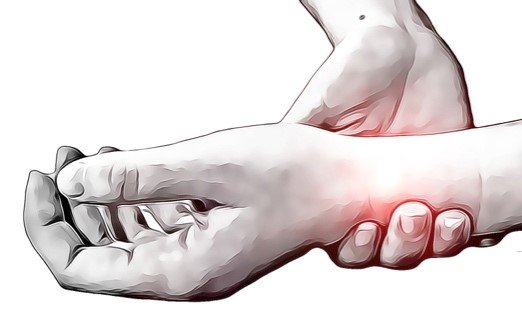What is a wrist
sprain?
What is a wrist
sprain?
Wrist sprains are a general term used to describe any
injury to the wrist that doesn’t include a fracture. While this can indicate
that they are not serious injuries, wrist sprains can be complicated injuries
that require supervision and treatment to recover fully.
The wrist refers to the area where the bones of the
forearm, the radius and ulna, meet and join the bones of the hand. The wrist is
able to twist on itself and allows the hand to move to face palm up
(supination) or palm down (pronation). The hand is also able to move up and
down (flexion/extension) and side to side (abduction/adduction). To allow such
complicated movements, the joint surfaces of the wrist are held together by a
series of ligaments. When a wrist is sprained, it is usually these ligaments
that have been damaged.
What
are the symptoms?
The primary symptom of a sprained wrist is pain with
movement of the joint or when taking load, such as when holding a heavy object.
Ligament injuries are given a grading scale
to indicate their severity, which can help to guide treatment. Grade I tears refers
to a stretching or laxity of the ligament fibers and injuries of this grade
usually heal with rest within 2-3 weeks. A grade II classification signifies
that there has been a partial tear of the ligament fibers and will often need
more time and treatment for recovery. Grade III tears refer to a full thickness
rupture of a ligament and may require splinting or even surgery.
The most common cause of a wrist sprain is a
fall onto an outstretched hand. Ligament injuries can also happen gradually
through over use, although this is less common.
What
is the treatment?
Your physiotherapist is able to
help diagnosis a wrist sprain and can help to rule out a fracture. An X-ray
might be required and your physiotherapist will perform special tests to help
identify exactly which structure has been injured, giving the injury a grade,
to help guide treatment.
How
can physio help?
The key to effective recovery for a wrist sprain is often
in ensuring that the right treatment protocols are in place for your injury. Grade
I sprains will recover best with gentle exercises and early strengthening while
Grade II to III injuries may require splinting or even a surgical consult for
repair.
If surgery is the right course for you, your
physiotherapist is able to guide you through this treatment pathway, helping
you to prepare and recover from surgery to get the best outcome possible.
None of the information in this
newsletter is a replacement for proper medical advice. Always see a medical
professional for advice on your individual injury.
